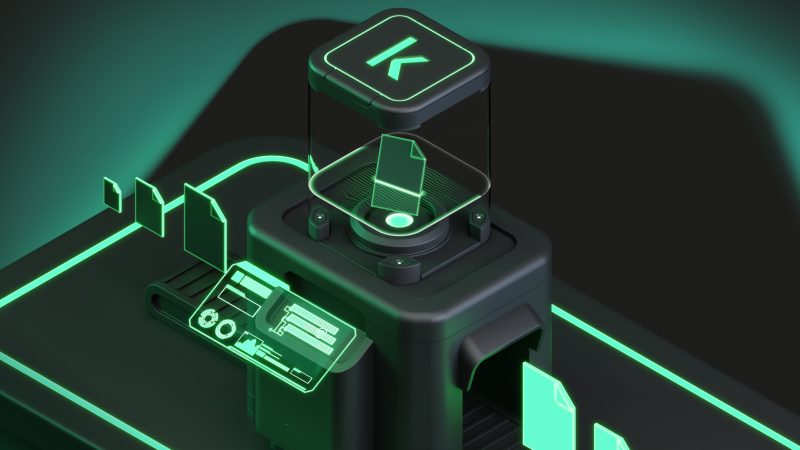
When analyzing the content of websites in an attempt to determine what category it belongs to, we sometimes get an utterly unexpected result. It could be the official page of a metal structures manufacturer or online flower shop, or, say, a law firm website, with completely neutral content, but our solutions would place it squarely in the “Adult content” category. On the surface, it is completely unclear how our systems arrived at that verdict, but one look at the content categorization engine’s page analysis log clears it up.
Invisible HTML block, or SEO spam
The website falls into the questionable category because it contains an HTML block with links to third-party sites, invisible to regular users. These sites typically host content of a certain kind – which, in our experience, is most often pornographic or gambling materials – and in the hidden block, you will find relevant keywords along with the links. These practices are a type of Black Hat SEO, or SEO spam: the manipulation of website search rankings in violation of ethical search engine optimization (SEO) principles. Although there are many techniques that attackers use to raise or lower websites in search engine rankings, we have encountered hidden blocks more frequently lately, so this is what this post focuses on.
Website owners rarely suspect a problem until they face obvious negative consequences, such as a sharp drop in traffic, warnings from search engines, or complaints from visitors. Those who use Kaspersky solutions may see their sites blocked due to being categorized as prohibited, a sign that something is wrong with them. Our engine detects both links and their descriptions that are present in a block like that.
How hidden links work
Hyperlinks that are invisible to regular users but still can be scanned by various analytical systems, such as search engines or our web categorization engine, are known as “hidden links”. They are often used for scams, inflating website rankings (positions in search results), or pushing down the ranking of a victim website.
To understand how this works, let us look at how today’s SEO functions in the first place. A series of algorithms is responsible for ranking websites in search results, such as those served by Google. The oldest and most relevant one to this article is known as PageRank. The PageRank metric, or weight in the context of this algorithm, is a numerical value that determines the importance of a specific page. The higher the number of links from other websites pointing to a page, and the greater those websites’ own weights, the higher the page’s PageRank.
So, to boost their own website’s ranking in search results, the malicious actor places hidden links to it on the victim website. The higher the victim website’s PageRank, the more attractive it is to the attacker. High-traffic platforms like blogs or forums are of particular interest to them.
However, PageRank is no longer the only method search engines use to measure a website’s value. Google, for example, also applies other algorithms, such as the artificial intelligence-based RankBrain or the BERT language model. These algorithms use more sophisticated metrics, such as Domain Authority (that is, how much authority the website has on the subject the user is asking about), link quality, and context. Placing links on a website with a high PageRank can still be beneficial, but this tactic has a severely limited effect due to advanced algorithms and filters aimed at demoting sites that break the search engine’s rules. Examples of these filters are as follows:
- Google Penguin, which identifies and penalizes websites that use poor-quality or manipulative links, including hidden ones, to boost their own rankings. When links like these are detected, their weight can be zeroed out, and the ranking may be lowered for both sites: the victim and the spam website.
- Google Panda, which evaluates content quality. If the website has a high PageRank, but the content is of low quality, duplicated, auto-generated, or otherwise substandard, the site may be demoted.
- Google SpamBrain, which uses machine learning to analyze HTML markup, page layouts, and so forth to identify manipulative patterns. This algorithm is integrated into Google Penguin.
What a Black Hat SEO block looks like in a page’s HTML markup
Let us look at some real examples of hidden blocks we have seen on legitimate websites and determine the attributes by which these blocks can be identified.
Example 1
|
1 2 3 4 5 6 7 8 9 10 11 12 13 14 15 16 17 18 19 20 21 |
<div style="display: none;"> افلام سكس اعتصاب <a href="https://www.azcorts.com/" rel="dofollow" target="_self">azcorts.com</a> قنوات جنسية free indian porn com <a href="https://porngun.mobi" target="_self">porngun.mobi</a> xharmaster 石原莉紅 <a href="https://javclips.mobi/" target="_blank" title="javclips.mobi">javclips.mobi</a> ちっぱい bank porn <a href="https://pimpmpegs.net" target="_self" title="pimpmpegs.net free video porn">pimpmpegs.net</a> wwwporm salamat lyrics tagalog <a href="https://www.teleseryeone.com/" target="_blank" title="teleseryeone.com sandro marcos alexa miro">teleseryeone.com</a> play desi </div> <div style="display: none;"> كسى بيوجعنى <a href="https://www.sexdejt.org/" rel="dofollow">sexdejt.org</a> سكس سانى indian sex video bp <a href="https://directorio-porno.com/" rel="dofollow" target="_self" title="directorio-porno.com">directorio-porno.com</a> xvideos indian pussy swara bhaskar porn <a href="https://greenporn.mobi" title="greenporn.mobi lesbian porn hq">greenporn.mobi</a> kannada sexy video bp sex full <a href="https://tubepornmix.info" target="_blank" title="tubepornmix.info aloha tube porn video">tubepornmix.info</a> lily sex pinayflix pamasahe <a href="https://www.gmateleserye.com/" rel="dofollow" target="_blank">gmateleserye.com</a> family feud november 17 </div> <div style="display: none;"> sunny leone ki bp download <a href="https://eroebony.info" target="_self" title="eroebony.info">eroebony.info</a> hansika xvideos موقع سكس ايطالى <a href="https://bibshe.com/" target="_self" title="bibshe.com سكس العادة السرية">bibshe.com</a> صور احلى كس raja rani coupon result <a href="https://booketube.mobi" rel="dofollow">booketube.mobi</a> exercise sex videos indianbadwap <a href="https://likeporn.mobi" rel="dofollow" target="_blank" title="likeporn.mobi free hd porn">likeporn.mobi</a> rabi pirzada nude video marathi porn vidio <a href="https://rajwap.biz" rel="dofollow" target="_blank" title="rajwap.biz">rajwap.biz</a> www.livesex.com </div> |
Another sign of Black Hat SEO in the example is the attribute rel="dofollow". This instructs search engines that the link carries link juice, meaning it passes weight. Spammers intentionally set this attribute to transfer authority from the victim website to the ones they are promoting. In standard practice, webmasters may, conversely, use rel="nofollow", which signifies that the presence of the link on the site should not influence the ranking of the website where it leads.
Thus, the combination of a hidden block ( display: none;) and a set of external pornographic (in this instance) links with the rel="dofollow" attribute unequivocally point to a SEO spam injection.
Note that all <div> sections are concentrated in one spot, at the end of the page, rather than scattered throughout the page code. This block demonstrates a classic Black Hat SEO approach.
Example 2
|
1 2 3 4 5 6 7 8 9 10 11 12 13 14 15 |
<div style="overflow: auto; position: absolute; height: 0pt; width: 0pt;">سكس انجليز <a href="https://wfporn.com/" target="_self" title="wfporn.com افلام سحاق مترجم">wfporn.com</a> سكس كلاسيك مترجم</div> <div style="overflow: auto; position: absolute; height: 0pt; width: 0pt;">فيلم سكس <a href="https://www.keep-porn.com/" rel="dofollow" target="_blank">keep-porn.com</a> سكس هندى اغتصاب</div> <div style="overflow: auto; position: absolute; height: 0pt; width: 0pt;">desi nude tumbler <a href="https://www.desixxxv.net" title="desixxxv.net free hd porn video">desixxxv.net</a> kanpur sexy video</div> <div style="overflow: auto; position: absolute; height: 0pt; width: 0pt;">www wap sex video com <a href="https://pornorado.mobi" target="_self">pornorado.mobi</a> sexy film video mp4</div> <div style="overflow: auto; position: absolute; height: 0pt; width: 0pt;">mom yes porn please <a href="https://www.movsmo.net/" rel="dofollow" title="movsmo.net">movsmo.net</a> yes porn please brazzers</div> <div style="overflow: auto; position: absolute; height: 0pt; width: 0pt;">xxx download hd <a href="https://fuxee.mobi" title="fuxee.mobi">fuxee.mobi</a> fat woman sex</div> <div style="overflow: auto; position: absolute; height: 0pt; width: 0pt;">bangalore xxx <a href="https://bigassporntrends.com" rel="dofollow" target="_self" title="bigassporntrends.com">bigassporntrends.com</a> sexy video kashmir</div> <div style="overflow: auto; position: absolute; height: 0pt; width: 0pt;">xnxx sister sex <a href="https://wetwap.info" rel="dofollow" target="_self" title="wetwap.info hd porn streaming">wetwap.info</a> blue film a video</div> <div style="overflow: auto; position: absolute; height: 0pt; width: 0pt;">tamilschoolsexvideo <a href="https://tubetria.mobi" rel="dofollow" title="tubetria.mobi">tubetria.mobi</a> sex free videos</div> <div style="overflow: auto; position: absolute; height: 0pt; width: 0pt;">سكس من اجل المال مترجم <a href="https://www.yesexyporn.com/" title="yesexyporn.com فوائد لحس الكس">yesexyporn.com</a> نسوان شرميط</div> <div style="overflow: auto; position: absolute; height: 0pt; width: 0pt;">kamapishi <a href="https://desisexy.org/" target="_blank" title="desisexy.org free porn gay hd online">desisexy.org</a> savita bhabhi xvideo</div> <div style="overflow: auto; position: absolute; height: 0pt; width: 0pt;">aflamk2 <a href="https://www.pornvideoswatch.net/" target="_self" title="pornvideoswatch.net">pornvideoswatch.net</a> نيك ثمينات</div> <div style="overflow: auto; position: absolute; height: 0pt; width: 0pt;">hentaifox futanari <a href="https://www.hentaitale.net/" target="_blank" title="hentaitale.net pisuhame">hentaitale.net</a> hen hentai</div> <div style="overflow: auto; position: absolute; height: 0pt; width: 0pt;">video sexy wallpaper <a href="https://povporntrends.com" target="_blank">povporntrends.com</a> bengolibf</div> <div style="overflow: auto; position: absolute; height: 0pt; width: 0pt;">persona 5 hentai manga <a href="https://www.younghentai.net/" rel="dofollow" target="_self" title="younghentai.net oni hentai">younghentai.net</a> toys hentai</div> |
Let us analyze the set of CSS styles: <div style="overflow: auto; position: absolute; height: 0pt; width: 0pt;">. The properties position: absolute; height: 0pt; width: 0pt; remove the block from the visible area of the page, while overflow: auto prevents the content from being displayed even if it exceeds zero dimensions. This makes the links inaccessible to humans, but it does not prevent them from being preserved in the DOM (document object model). That’s why HTML code scanning systems, such as search engines, are able to see it.
In addition to the zero dimensions of the block, in this example, just as in the previous one, we see the attribute rel="dofollow", as well as many links to pornographic websites with relevant keywords.
The combination of styles that sets the block dimensions to zero is less obvious than display: none; because the element is technically present in the rendering, although it is not visible to the user. Nevertheless, it is worth noting that modern search engine security algorithms, such as Google Penguin, detect this technique too. To counter this, malicious actors may employ more complex techniques for evading detection. Here is another example:
|
1 2 3 4 5 6 7 8 9 10 11 12 13 14 15 16 17 18 19 20 21 22 23 24 25 26 27 |
<script src="files/layout/js/slider3d.js?v=0d6651e2"></script><script src="files/layout/js/layout.js?v=51a52ad1"></script> <style type="text/css">.ads-gold {height: 280px;overflow: auto;color: transparent;}.ads-gold::-webkit-scrollbar { display: none;}.ads-gold a {color: transparent;}.ads-gold {font-size: 10px;}.ads-gold {height: 0px;overflow: hidden;}</style> <div class="ads-gold"> Ganhe Rápido nos Jogos Populares do Cassino Online <a href="https://580-bet.com" target="_blank">580bet</a> Cassino <a href="https://bet-7k.com" target="_blank">bet 7k</a>: Diversão e Grandes Vitórias Esperam por Você Aposte e Vença no Cassino <a href="https://leao-88.com" target="_blank">leao</a> – Jogos Fáceis e Populares Jogos Populares e Grandes Prêmios no Cassino Online <a href="https://luck-2.com" target="_blank">luck 2</a> Descubra os Jogos Mais Populares no Cassino <a href="https://john-bet.com" target="_blank">john bet</a> e Ganhe <a href="https://7755-bet.com" target="_blank">7755 bet</a>: Apostas Fáceis, Grandes Oportunidades de Vitória Jogue no Cassino Online <a href="https://cbet-88.com" target="_blank">cbet</a> e Aumente suas Chances de Ganhar Ganhe Prêmios Incríveis com Jogos Populares no Cassino <a href="https://bet7-88.com" target="_blank">bet7</a> Cassino <a href="https://pk55-88.com" target="_blank">pk55</a>: Onde a Sorte Está ao Seu Lado Experimente o Cassino <a href="https://8800-bet.com" target="_blank">8800 bet</a> e Ganhe com Jogos Populares Ganhe Facilmente no Cassino Online <a href="https://doce-88.com" target="_blank">doce</a> Aposte e Vença no Cassino <a href="https://bet-4-br.com" target="_blank">bet 4</a> Jogos Populares e Grandes Premiações na <a href="https://f12--bet.com" target="_blank">f12bet</a> Descubra a Diversão e Vitória no Cassino <a href="https://bet-7-br.com" target="_blank">bet7</a> Aposte nos Jogos Mais Populares do Cassino <a href="https://ggbet-88.com" target="_blank">ggbet</a> Ganhe Prêmios Rápidos no Cassino Online <a href="https://bet77-88.com" target="_blank">bet77</a> Jogos Fáceis e Rápidos no Cassino <a href="https://mrbet-88.com" target="_blank">mrbet</a> Jogue e Ganhe com Facilidade no Cassino <a href="https://bet61-88.com" target="_blank">bet61</a> Cassino <a href="https://tvbet-88.com" target="_blank">tvbet</a>: Onde a Sorte Está Ao Seu Lado Aposte nos Melhores Jogos do Cassino Online <a href="https://pgwin-88.com" target="_blank">pgwin</a> Ganhe Grande no Cassino <a href="https://today-88.com" target="_blank">today</a> com Jogos Populares Cassino <a href="https://fuwin-88.com" target="_blank">fuwin</a>: Grandes Vitórias Esperam por Você Experimente os Melhores Jogos no Cassino <a href="https://brwin-88.com" target="_blank">brwin</a> </div></body> |
Aside from the parameters we are already familiar with, which are responsible for concealing a block ( height: 0px, color: transparent, overflow: hidden), and the name that hints at its contents ( \<style type="text/css"\>.ads-gold), strings with scripts in this example can be found at the very beginning: <script src="files/layout/js/slider3d.js?v=0d6651e2"></script> and <script src="files/layout/js/layout.js?v=51a52ad1"></script>. These indicate that external JavaScript can dynamically control the page content, for example, by adding or changing hidden links, that is, modifying this block in real time.
This is a more advanced approach than the ones in the previous examples. Yet it is also detected by filters responsible for identifying suspicious manipulations.
Other parameters and attributes exist that attackers use to conceal a link block. These, however, can also be detected:
- the parameter visibility: hidden; can sometimes be seen instead of display: none;.
- Within position: absolute;, the block with hidden links may not have a zero size, but rather be located far beyond the visible area of the page. This can be set, for example, via the property left: -9232px;, as in the example below.
|
1 2 3 4 5 6 7 8 9 10 11 12 13 14 15 16 17 18 19 20 21 22 |
<div style="position: absolute; left: -9232px"> <a href="https://romabet.cam/">روما بت</a><br> <a href="https://mahbet.cam/">ماه بت</a><br> <a href="https://pinbahis.com.co/">پین باهیس</a><br> <a href="https://bettingmagazine.org/">بهترین سایت شرط بندی</a><br> <a href="https://1betcart.com/">بت کارت</a><br> <a href="https:// yasbet.com.co/">یاس بت</a><br> <a href="https://yekbet.cam/">یک بت</a><br> <a href="https://megapari.cam/">مگاپاری </a><br> <a href="https://onjabet.net/">اونجا بت</a><br> <a href="https://alvinbet.org/">alvinbet.org</a><br> <a href="https://2betboro.com/">بت برو</a><br> <a href="https://betfa.cam/">بت فا</a><br> <a href="https://betforward.help/">بت فوروارد</a><br> <a href="https://1xbete.org/">وان ایکس بت</a><br> <a href="https://1win-giris.com.co/">1win giriş</a><br> <a href="https://betwiner.org/">بت وینر</a><br> <a href="https://4shart.com/">بهترین سایت شرط بندی ایرانی</a><br> <a href="https://1xbetgiris.cam">1xbet giriş</a><br> <a href="https://1kickbet1.com/">وان کیک بت</a><br> <a href="https://winbet-bet.com/">وین بت</a><br> <a href="https://ritzobet.org/">ریتزو بت</a><br> |
How attackers place hidden links on other people’s websites
To place hidden links, attackers typically exploit website configuration errors and vulnerabilities. This may be a weak or compromised password for an administrator account, plugins or an engine that have not been updated in a long time, poor filtering of user inputs, or security issues on the hosting provider’s side. Furthermore, attackers may attempt to exploit the human factor, for example, by setting up targeted or mass phishing attacks in the hope of obtaining the website administrator’s credentials.
Let us examine in detail the various mechanisms through which an attacker gains access to editing a page’s HTML code.
- Compromise of the administrator password. An attacker may guess the password, use phishing to trick the victim into giving it away, or steal it with the help of malware. Furthermore, the password may be found in a database of leaked credentials. Site administrators frequently use simple passwords for control panel protection or, even worse, leave the default password, thereby simplifying the task for the attacker.
After gaining access to the admin panel, the attacker can directly edit the page’s HTML code or install their own plugins with hidden SEO blocks. - Exploitation of CMS (WordPress, Joomla, Drupal) vulnerabilities. If the engine or plugins are out of date, attackers use known vulnerabilities (SQL Injection, RCE, or XSS) to gain access to the site’s code. After that, depending on the level of access gained by exploiting the vulnerability, they can modify template files (header.php, footer.php, index.php, etc.), insert invisible blocks into arbitrary site pages, and so on.
In SQL injection attacks, the hacker injects their malicious SQL code into a database query. Many websites, from news portals to online stores, store their content (text, product descriptions, and news) in a database. If an SQL query, such as SELECT * FROM posts WHERE id = '$id' allows passing arbitrary data, the attacker can use the $id field to inject their code. This allows the attacker to change the content of records, for example, by inserting HTML with hidden blocks.
In RCE (remote code execution) attacks, the attacker gains the ability to run their own commands on the server where the website runs. Unlike SQL injections, which are limited to the database, RCE provides almost complete control over the system. For example, it allows the attacker to create or modify site files, upload malicious scripts, and, of course, inject invisible blocks.
In an XSS (cross-site scripting) attack, the attacker injects their JavaScript code directly into the web page by using vulnerable input fields, such as those for comments or search queries. When another user visits this page, the malicious script automatically executes in their browser. Such a script enables the attacker to perform various malicious actions, including stealthily adding a hidden <div> block with invisible links to the page. For XSS, the attacker does not need direct access to the server or database, as in the case with SQL injection or RCE; they only need to find a single vulnerability on the website. - An attack via the hosting provider. In addition to directly hacking the target website, an attacker may attempt to gain access to the website through the hosting environment. If the hosting provider’s server is poorly secured, there is a risk of it being compromised. Furthermore, if multiple websites or web applications run on the same server, a vulnerability in one of them can jeopardize all other projects. The attacker’s capabilities depend on the level of access to the server. These capabilities may include: injecting hidden blocks into page templates, substituting files, modifying databases, connecting external scripts to multiple websites simultaneously, and so forth. Meanwhile, the website administrator may not notice the problem because the vulnerability is being exploited within the server environment rather than the website code.
Note that hidden links appearing on a website is not always a sign of a cyberattack. The issue often arises during the development phase, for example, if an illegal copy of a template is downloaded to save money or if the project is executed by an unscrupulous web developer.
Why attackers place hidden blocks on websites
One of the most obvious goals for injecting hidden blocks into other people’s websites is to steal the PageRank from the victim. The more popular and authoritative the website is, the more interesting it is to attackers. However, this does not mean that moderate- or low-traffic websites are safe. As a rule, administrators of popular websites and large platforms do their best to adhere to security rules, so it is not so easy to get close to them. Therefore, attackers may target less popular – and less protected – websites.
As previously mentioned, this approach to promoting websites is easily detected and blocked by search engines. In the short term, though, attackers still benefit from this: they manage to drive traffic to the websites that interest them until search engine algorithms detect the violation.
Even though the user does not see the hidden block and cannot click the links, attackers can use scripts to boost traffic to their websites. One possible scenario involves JavaScript creating an iframe in the background or sending an HTTP request to the website from the hidden block, which then receives information about the visit.
Hidden links can lead not just to pornographic or other questionable websites but also to websites with low-quality content whose sole purpose is to be promoted and subsequently sold, or to phishing and malicious websites. In more sophisticated schemes, the script that provides “visits” to such websites may load malicious code into the victim’s browser.
Finally, hidden links allow attackers to lower the reputation of the targeted website and harm its standing with search engines. This threat is especially relevant in light of the fact that algorithms such as Google Penguin penalize websites hosting questionable links. Attackers may use these techniques as a tool for unfair competition, hacktivism, or any other activity that involves discrediting certain organizations or individuals.
Interestingly, in 2025, we have more frequently encountered hidden blocks with links to pornographic websites and online casinos on various legitimate websites. With low confidence, we can suggest that this is partly due to the development of neural networks, which make it easy to automate such attacks, and partly due to the regular updates to Google’s anti-spam systems, the latest of which was completed at the end of September 2025: attackers may have rushed to maximize their gains before the search engine made it a little harder for them.
Consequences for the victim website
The consequences for the victim website can vary in severity. At a minimum, the presence of hidden links placed by unauthorized parties hurts search engine reputation, which may lead to lower search rankings or even complete exclusion from search results. However, even without any penalties, the links disrupt the internal linking structure because they lead to external websites and pass on a portion of the victim’s weight to them. This negatively impacts the rankings of key pages.
Although unseen by visitors, hidden links can be discovered by external auditors, content analysis systems, or researchers who report such findings in public reports. This is something that can undermine trust in the website. For example, sites where our categorization engine detects links to pornography pages will be classified as “Adult content”. Consequently, all of our clients who use web filters to block this category will be unable to visit the website. Furthermore, information about a website’s category is published on our Kaspersky Threat Intelligence Portal and available to anyone wishing to look up its reputation.
If the website is being used to distribute illegal or fraudulent content, the issue enters the legal realm, with the owner potentially facing lawsuits from copyright holders or regulators. For example, if the links lead to websites that distribute pirated content, the site may be considered an intermediary in copyright infringement. If the hidden block contains malicious scripts or automatic redirects to questionable websites, such as phishing pages, the owner can be charged with fraud or some other cybercrime.
How to detect a hidden link block on your website
The simplest and most accessible method for any user to check a website for a hidden block is to view its source code in the browser. This is very easy to do. Navigate to the website, press Control+U, and the website’s code will open in the next tab. Search (Control+F) the code for the following keywords: display: none, visibility: hidden, opacity: 0, height: 0, width: 0, position: absolute. In addition, you can check for keywords that are characteristic of the hidden content itself. When it comes to links that point to adult or gambling sites, you should look for porn, sex, casino, card, and the like.
A slightly more complex method is using web developer tools to investigate the DOM for invisible blocks. After the page fully loads, open DevTools (F12) in the browser and go to the Elements tab. Search (Control+F) for keywords such as <a, iframe, display: none, hidden, opacity. Hover your cursor over suspicious elements in the code so the browser highlights their location on the page. If the block occupies zero area or is located outside the visible area, that is an indicator of a hidden element. Check the Computed tab for the selected element; there, you can see the applied CSS styles and confirm that it is hidden from the user’s view.
You can also utilize specialized SEO tools. These are typically third-party solutions that scan website SEO data and generate reports. They can provide a report about suspicious links as well. Few of them are free, but when selecting a tool, you should be guided primarily by the vendor’s reputation rather than price. It is better to use tried-and-true, well-known services that are known to be free of malicious or questionable payloads. Examples of these trusted services include Google Search Console, Bing Webmaster Tools, OpenLinkProfiler, and SEO Minion.
Another way to discover hidden SEO spam on a website is to check the CMS itself and its files. First, you should scan the database tables for suspicious HTML tags with third-party links that may have been inserted by attackers, and also carefully examine the website’s template files (header.php, footer.php, and index.php) and included modules for unfamiliar or suspicious code. Pay particular attention to encrypted insertions, unclear scripts, or links that should not originally be present in the website’s structure.
Additionally, you can look up your website’s reputation on the Kaspersky Threat Intelligence Portal. If you find it in an uncharacteristic category – typically “Adult content”, “Sexually explicit”, or “Gambling” – there is a high probability that there is a hidden SEO spam block embedded in your website.
How to protect your website
To prevent hidden links from appearing on your website, avoid unlicensed templates, themes, and other pre-packaged solutions. The entire site infrastructure must be built only on licensed and official solutions. The same principle applies to webmasters and companies you hire to build your website: we recommend checking their work for hidden links, but also for vulnerabilities in general. Never cut corners when it comes to security.
Keep your CMS, themes, and plugins up to date, as new versions often patch known vulnerabilities that attackers can exploit. Delete any unused plugins and themes, if any. The less unnecessary components are installed, the lower the risk of an exploit in one of the extensions, plugins, and themes. It is worth noting that this risk never disappears completely – it is still there even if you have a minimal set of components as long as they are outdated or poorly secured.
To protect files and the server, it is important to properly configure access permissions. On servers running Linux and other Unix-like systems, use 644 for files and 755 for folders. This means that the owner can open folders, and read and modify folders and files, while the group and other users can only read files and open folders. If write access is not necessary, for example in template folders, forbid it altogether to lower the risk of malicious actors making unauthorized changes. Furthermore, you must set up regular, automatic website backups so that data can be quickly restored if there is an issue.
Additionally, it is worth using web application firewalls (WAFs), which help block malicious requests and protect the site from external attacks. This solution is available in Kaspersky DDoS Protection.
To protect the administrator panel, use only strong passwords and 2FA (Two-Factor Authentication) at all times. You would be well-advised to restrict access to the admin panel by IP address if you can. Only a limited group of individuals should be granted admin privileges.





















SEO spam and hidden links: how to protect your website and your reputation